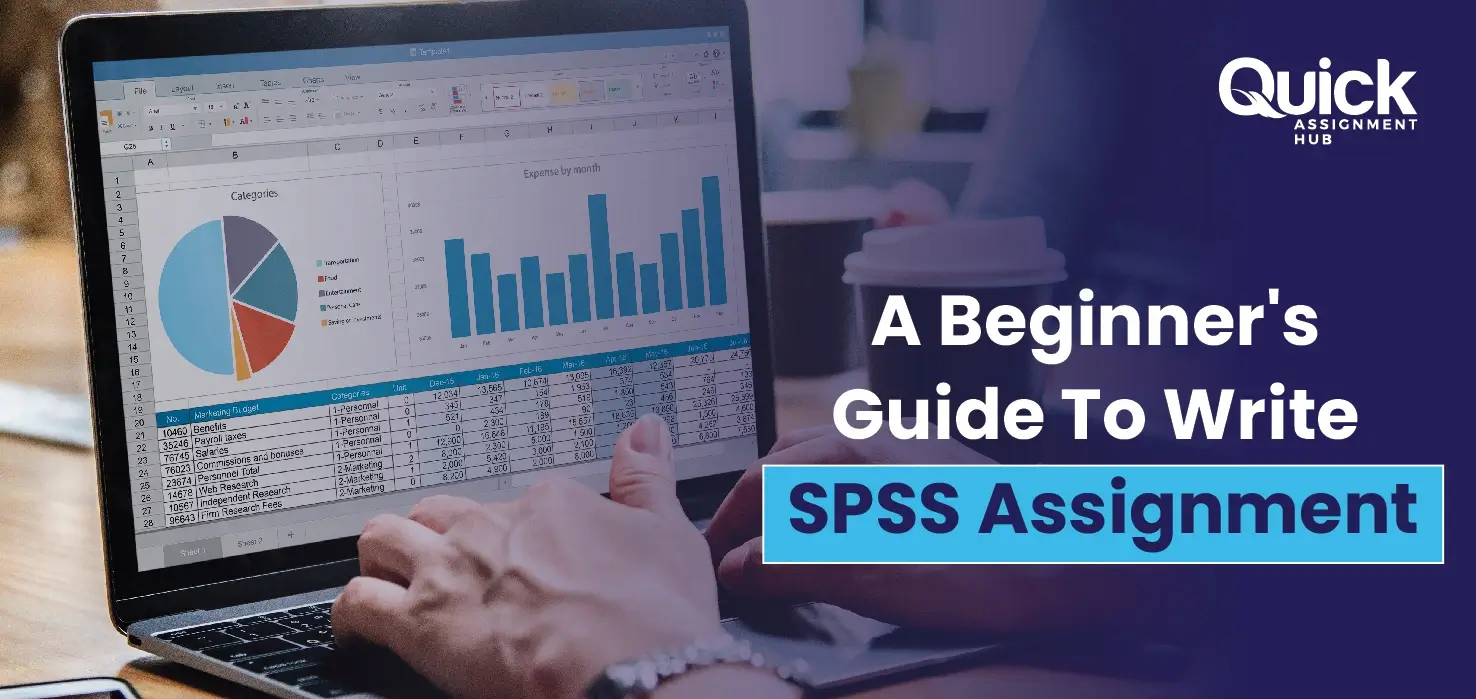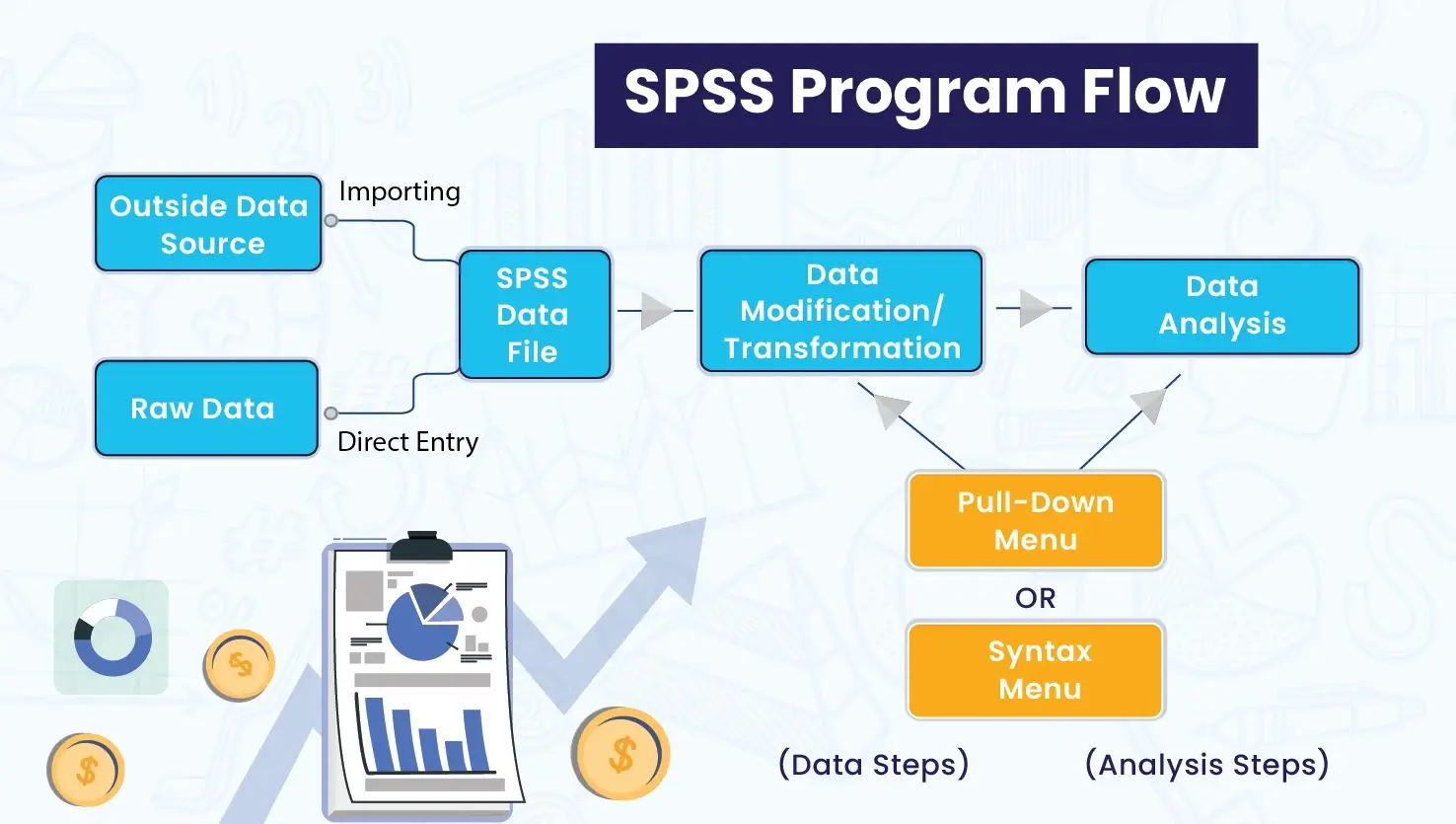
SPSS is a widely used statistical software for numerous purposes, and starting your assignment using this software can feel overwhelming, especially when you have to navigate endless data and unfamiliar applications.
The software might offer many advantages, yet for a beginner, it is challenging. Even if you're starting, the blog post is here to simplify how to write SPSS assignments, along with some tips and tricks. Let's dive in, shall we?
When analysing data, SPSS is the first choice for students and researchers. Why? Because it offers features to handle many sets of complex data. Now that you are working on SPSS assignments, you might want to know what benefits they add to your learning:-
It is designed with an intuitive layout, making it accessible and user-friendly to beginners. It has numerous menus that allow you to analyse data without deep programming knowledge.
It generates detailed charts and graphs for straightforward interpretation and visual appeal, which is advantageous for your assignments and presentations.
SPSS excels in data management, offering tools for data entry, cleaning and manipulation, thereby reducing any errors and ensuring your results are reliable.
SPSS has a wealth of tutorials, communities, and user guides to provide step-by-step instructions for writing SPSS assignments whenever needed.
You will probably see a lot of SPSS statistics assignments that mention the same steps on how to write SPSS assignments, and that's no coincidence. These steps are popular for reasoning and provide a clear-cut approach to tackling your SPSS assignment. Here are the steps:-

The question assigned will have data, or you will be tasked to find the data using SPSS software. Start collecting your data for the analysis. Depending on the assignment topic, you must record existing variables, add new ones or convert your data using the data editor in SPSS.
The next step in your SPSS assignment is to plan your analysis. To make the mistake of writing your analysis without gathering your thoughts and research first. Your plan should include the objectives, key subheadings and points to save time and maintain logic and flow.
Next, you can use inferential statistics after descriptive statistics to generate conclusions. SPSS has numerous features for this, such as regression analysis, ANOVA, and chi-square tests. Select a test that fits the situation based on your topic and measurement of variables.
After completing all tests using the SPSS software, you can present your results in a report or visual representation that mentions all the statistical tests you performed and your results so that your professor knows your approaches and findings.
Now that you have performed all statistical tests and gathered your results, writing your SPSS assignment is time-consuming. Follow the standard or stipulated structure from the introduction to the conclusion. Explain in detail your methodology, analysis, and results with evidence in tables or charts.
Your First Order
Get 20% OFF!
SPSS can be challenging and overwhelming for a beginner, as many features and functions are difficult to understand simultaneously. With assistance from professors or SPSS statistics assignments help you will get a clear understanding to navigate them independently.
SPPS requires technical skills such as data cleaning or manipulation, which makes its application much more difficult. With regular practice and exercises, you can observe their approaches, learn from them, and effectively build your skills in using SPSS.
Like any other skill, SPSS requires practice. You lose touch with it without regular practice, and assignments become challenging. You should practice regularly to build proficiency and eventually slowly become a master at it.
SPPS assignments require a significant amount of time for completion, which you often don't have due to your busy college schedule. If you plan and schedule your tasks, you'll get the mindset to complete them efficiently despite the workload and distractions.
Also read: How Can SPSS Enhance Your Dissertation Writing Process?
Here are some tips recommended by experts to improve your SPSS assignment writing:-
Before starting your analysis, ensure your data is clean and well-organised. Keep a data dictionary outlining the variables and types to prevent confusion.
Don't only present numbers in your SPSS assignment, but also explain what they mean. Give context to how you achieved these results and give clear interpretations.
Use visual aids like charts, histograms, tables or graphs to make interpreting data easier. Select visualisation techniques that help portray your results best.
Lastly, don't just stop with one assignment or exercise. Regularly practice to learn from your mistakes and eventually build confidence in yourself and your skills.
Are you struggling to make sense of your SPSS assignment or unable to move past a challenging concept? Don't worry; we can assist you when challenging concepts hinder you and deadlines loom.
We have experienced statisticians who specialise in SPSS and assist you in assigning values in SPSS.
All your assignments are researched well, analysed accurately and formatted well to ensure they meet your professor's expectations.
Our team works very hard to deliver your SPSS assignments on time so that you won't miss your submission due date.
If you think SPSS assignments are costly, you haven't checked ours. Our prices are student-friendly yet competitive.
Learn more about: Crush Your Odoo Assignments With Some Help
Writing an excellent SPSS assignment as a beginner will take time and practice. However, if you employ these steps and tricks and practice regularly, you will hardly remember when you found it challenging. Our guide on how to write SPSS assignments was beneficial for you, and we hope you create excellent SPSS assignments and score great!